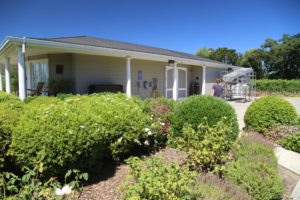
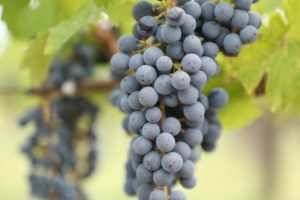
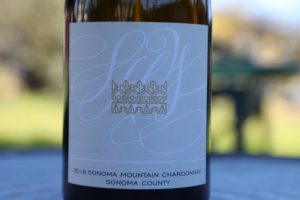 Saint Helena Winery is located a few minutes’ drive north east of the town of St. Helena and is bordered by the Napa River and York Creek and is near the Silverado Trail. While the property is surrounded by other vineyards in a rural setting, the winery and grounds are actually within the city limits of St. Helena. This property is about 19 acres.
Saint Helena Winery is located a few minutes’ drive north east of the town of St. Helena and is bordered by the Napa River and York Creek and is near the Silverado Trail. While the property is surrounded by other vineyards in a rural setting, the winery and grounds are actually within the city limits of St. Helena. This property is about 19 acres.
This winery was founded by Peter (who we originally met with) and Paulette Story, San Francisco Bay Area transplants. While never having a background in the wine business until moving to St. Helena, Peter’s unbridled passion for wine was at the fundamental core of his success. He purchased the property in 1994, began his career as a grower, selling grapes to several prominent well-known Napa wineries. In 1999 Peter joined a local home wine making organization. When experienced winemakers began to give him positive feedback Peter decided to start making wine commercially. Around this time, winemaker Mark Herold had begun making Merus Wines in his garage in Napa – wines that would ultimately become ‘cult’ favorites because of their style and favorable high ratings from prominent wine writers. With Mark’s consulting help, Saint Helena Winery’s first commercial release was from 2000 – a single barrel of wine.
In 2010 Peter sold the winery and estate to Federated Insurance, a company founded in 1904 by farmers and farm-equipment dealers (based in Owatonna, Minnesota). Peter moved to Placer County where he founded Mount Saint Joseph Wines and operates the Vin Uva tasting room in the Granite Bay Village shopping center in Granite Bay (in the foothills east of Sacramento). What is more remarkable is another current Napa Valley wine brand, Work Vineyard used to own and operate a wine shop in this same shopping center complex (Lakeside Beverages).
Current winemaker Lindsey Wallingford handles both vineyard management duties and the wine making. Long time vineyard foreman, Javier Nino de Rivera stayed on during the transition in ownership and continues to oversee the vines along with his two twin sons. It is a small team here; even during harvest they do not have to hire interns as the vineyard team also provides support in the winery.
Long time and well-respected Napa winemaker Aaron Pott was already familiar with this vineyard through his work at Quintessa Winery. He joined the team and is now their consulting winemaker. He calls this vineyard a little Haut-Brion in tribute to Château Haut-Brion, a Premier Cru Classé chateau located in Bordeaux.
With the transition in ownership both the vineyard management and wine making was elevated with an eye on creating premium hand-crafted wines. They are meticulous with how they manage their own estate vineyards seeking to control many different aspects throughout the year. One management item they have taken a much more detailed approach with is quantity of grapes allowed to fully ripen. They farm for low yields; a certain amount of fruit is cut from the vines prior to harvest, taking into consideration the balance of fruit to vine vigor.
The soils on the property do differ from one side to the other; there are three variations of Bale Loam on site including parts of the vineyard that are full of gravel (alluvial in nature). 13.5 acres are planted to vine out of 17 total acres on the property. Eight clones of Cabernet Sauvignon are planted on site, including See, 337 and 191 – with the See clone coming from the well-known Backus Vineyard owned by Joseph Phelps Winery. For many years Saint Helena Winery would ferment in T-Bins (one- or two-ton plastic fermenters). In 2013 they purchased a number of small stainless-steel tanks which has given them additional control during the fermentation. The property is certified by Fish Friendly Farming.
Typically the winery produces between 1200 and 1500 cases annually. The vineyard is planted primarily to Cabernet Sauvignon with small amounts of Malbec, Cabernet Franc and a single row of Petite Sirah.
After tasting a number of their red wines over the years, the word seamless popped into mind. These are wines easily characterized by that descriptor; none of the bottlings we have tried over the years have any jagged edges or harsh components which stand out, rather they are harmonious in flavor and structure from start to finish. And if we were to assign a single word to describe their stylistic approach, it would be: gentle.
Select wines
Whites, Chardonnay
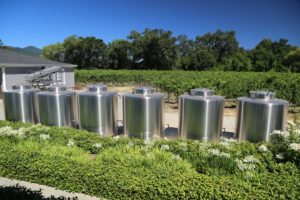
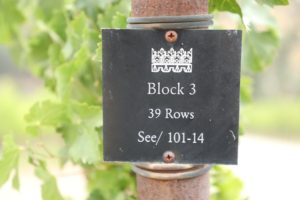
 The Saint Helena Winery expression of Chardonnay, regardless of vintage, focuses on balance, flavor, texture and acidity. This style of Chardonnay is the poster child for those who readily admit, “I normally don’t enjoy Chardonnay, but this wine resonates with me for some reason”.
The Saint Helena Winery expression of Chardonnay, regardless of vintage, focuses on balance, flavor, texture and acidity. This style of Chardonnay is the poster child for those who readily admit, “I normally don’t enjoy Chardonnay, but this wine resonates with me for some reason”.
The 2023 Saint Helena Winery Chardonnay, Scopus Vineyard Sonoma Mountain. This wine has been made every year since its inaugural vintage in 2018. This wine is medium gold in color; the aromatics are immediately compelling, offering both stone fruits and some lighter tropical influences. Its scents include pineapple, yellow apples, yellow nectarine, Alphonse mango, papaya. And as it evolves, additional layers are expressed including of honeysuckle, vanilla and creme Brule. On the palate there are flavors of pineapple, Golden delicious apples, apricot, yellow peaches and papaya. Easy drinking and flavorful but with plenty of complexity. We love its texture; the mouth feel sports a light fleshy viscosity supported by a balanced acidity. And this wine goes through full malolactic fermentation; the resulting diacetyl is mitigated in cellar so this wine never crosses into the territory of being buttery. Its élevage included both primary and secondary fermentation in neutral French oak barrels, followed by 18 months of aging in neutral French oak on the lees with minimal batonnage.
The 2022 Saint Helena Winery, Chardonnay Scopus Vineyard Sonoma Mountain; this site is located about 700 feet above the town of Glen Ellen and features red, rocky and iron rich soils. This wine sees no new French oak and was put through full malolactic fermentation. Its color is medium gold in color; restrained while simultaneously, elegant, the bouquet offers aromas of red delicious apple, Comice pear, guava, with some layers of floral contributions including jasmine and honeysuckle. Balanced, easy drinking and showing similar restraint to the bouquet, this wine tastes like golden apple, lychee, white nectarine and yellow plums. The balanced acidity nicely compliments the lightly fleshy and supple texture. The finish lingers with a light spice which outpaces the fruit on the finish. No over intense, oaky or buttery expressed here. This wine went through primary fermentation using indigenous yeast and secondary fermentation in 100% neutral French oak barrels. It was aged for 18 months on the lees with limited batonnage.
The 2018 Saint Helena Winery Sonoma Mountain Chardonnay, Sonoma County Scopus Vineyard is medium to deep yellow in color (we tasted this wine 5 years post vintage date). The sweetly expressive bouquet offers an appealing union of both fruit and dessert spice aromas including ripe melon, apricot, yellow peach, creme Brulé, caramel, vanilla, warm butter, honeysuckle and honeycomb. The palate offers a creamy texture with intense flavors of melon, peach, Meyer lemon and a lingering note of subtle vanilla. This is a rich Chardonnay; however, it does not cross the line into a California overripe, buttery and oaky style. This wine was whole cluster pressed, fermentation conducted in French oak barrels using indigenous yeast and the wine was aged sur lie with regular stirring. And it went through full malolactic fermentation and was aged for 18 months in neutral French oak barrels. This is their only non-estate wine.
Reds
Proprietary Red
 This is the only wine produced in their portfolio that is not entirely allocated; it is generally their most fruit forward, lightest and easiest drinking of their red expressions.
This is the only wine produced in their portfolio that is not entirely allocated; it is generally their most fruit forward, lightest and easiest drinking of their red expressions.
The 2022 Saint Helena Winery, Proprietary Red is a blend of 78% Cabernet Sauvignon, 15% Petit Verdot and 7% Petite Sirah, with the Petite Sirah coming from their one row. This wine is deep ruby and nearly opaque; the bouquet is elegant, red fruited with the oak offering a supporting layer and never not dominating. Its aromatics include Santa Rosa plum, red cherry, raspberry, boysenberry, a light minerally/crushed rocks character, with a sweet lingering thread including vanilla, cocoa powder and milk chocolate. This wine tastes like dark raspberry, strawberry, cherry and red plum. The mouth feel sports a soft, supple and lightly creamy texture with a kiss of lingering dryness. In terms of valley floor fruit, this is a poster child for the vintage in Napa Valley; it is highly approachable in its youth and defines the word, balance. We would not necessarily pair this with a big steak, rather we would suggest something lighter, perhaps pork shoulder. This wine was aged in French oak barrels for approximately 16 months before final blending and bottling.
Sympa
The 2022 Saint Helena Winery Sympa is a blend of 87% Cabernet Sauvignon and 12% Cabernet Franc and 1% Petit Verdot. This wine is deep ruby and nearly opaque; dark fruited the bouquet offers aromatics of plum, blackberry, dark cherry, boysenberry, Persian mulberry and cocoa powder. Its flavors including blackberry, red plum, red cherry, boysenberry, Persian mulberry and a note of cardamom. Lingers with an earthy and dusty character featuring grainy and gritty tannins which are already showing a tumbled character three years post vintage. The texture is in tandem with the fruit with neither one fully drawing ahead. While not a vintage that will be known for age ability, this wine still has years of life ahead with the proper cellar care. This wine is bright and lively and a remarkably fresh expression considering the challenges of this vintage in Napa Valley.
The 2021 Saint Helena Winery Sympa is 88% Cabernet Sauvignon, 10% Petit Verdot and 2% Cabernet Franc. This wine is deep red and nearly opaque; it opens immediately to a beautiful floral note including violets. Aromatically give this wine time to shine in the glass; as it evolves, it offers scents of dark raspberry, Santa Rosa plum, bramble, chocolate and cedar. The fruit is both red and darker fruited with flavors of blackberry, plum, and raspberry. Bright and balanced across the palate, at this age, the tannins are very youthful and sport a grainy and gritty texture and a drying character which fully coats the palate. Both fruit and texture parallel each other in tandem on the extended finish. The Petit Verdot certainly adds a bit of dark color and structure. Very age worthy.
The 2018 Saint Helena Winery Sympa is a blend of 97% Cabernet Sauvignon and 3% Petit Verdot. This wine is dark ruby in color with purplish tinges on the rim in the glass and almost opaque; the bouquet is darkly fruited with some darker floral notes along with plum and some slight cedar nuances. As the wine breathes it reveals scents of blackberries. The darker notes on the bouquet transition to the palate with flavors of plum and blackberry. This is a robust but balanced bottling. The long-lasting slightly savory finish offers a noticeable tannic grip, is chewy and lingers with a slight dryness. A hint of chocolate is found deep in the finish.
Estate Cabernet Sauvignon
The 2023 Saint Helena Winery Estate Cabernet Sauvignon is 92% Cabernet Sauvignon, 5% Cabernet Franc and 3% Petit Verdot. This wine is deep ruby and opaque; elegant, yet also ripe, its overall aromatic profile is one of restraint. With that said, the focus on the bouquet is clearly on the fruit with the oak taking a back seat. Its scents include dark raspberry, red cherry, boysenberry, dried rose petals, crushed rocks and a light note of mint. As it evolves it opens to a thread of dark cocoa powder. This wine tastes like red cherry, boysenberry, red plum and dark raspberry. The present and fully coating tannins offer a moderate to firm grip, lasting beyond the fruit on the finish. We love this texture; chalk-like, the tannins are fine-grained. It finishes with a light savory perception including dust and a kiss of dried herbs. This wine is showing exceptionally well in its youth at two years post vintage.
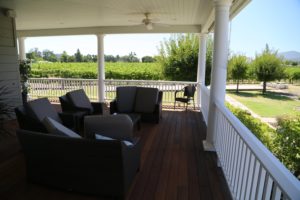
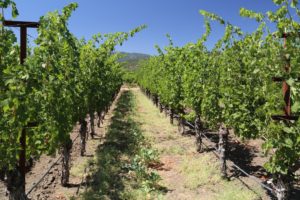
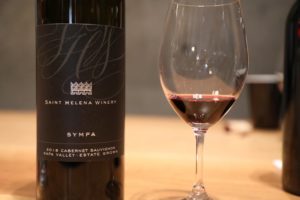 The 2022 Saint Helena Estate Cabernet Sauvignon is 96% Cabernet Sauvignon and 4% Petit Verdot. This wine is deep ruby in color; moody, brooding, savory and darker fruited, this wine smells distinctive. Its scents include bramble, Satsuma plum, soy sauce, dark olive, old cedar box and mushroom. No over ripe, fruit fruit forward aromatics here. Superbly balanced but with a step up in fruit intensity and texture as compared to the 2022 proprietary red bottling, this wine, tastes like dark plum, dark cherry, blackberry and Himalayan purple mulberry. The broadly coating tannins express a tumbled and gravelly texture. The finish lingers a bit savory including flavors of roasted herbs and a pronounced chalky, dusty and minerally character.
The 2022 Saint Helena Estate Cabernet Sauvignon is 96% Cabernet Sauvignon and 4% Petit Verdot. This wine is deep ruby in color; moody, brooding, savory and darker fruited, this wine smells distinctive. Its scents include bramble, Satsuma plum, soy sauce, dark olive, old cedar box and mushroom. No over ripe, fruit fruit forward aromatics here. Superbly balanced but with a step up in fruit intensity and texture as compared to the 2022 proprietary red bottling, this wine, tastes like dark plum, dark cherry, blackberry and Himalayan purple mulberry. The broadly coating tannins express a tumbled and gravelly texture. The finish lingers a bit savory including flavors of roasted herbs and a pronounced chalky, dusty and minerally character.
The 2011 Saint Helena Winery Estate Cabernet Sauvignon is an elegant wine and reveals a nice complexity of layered aromatics as the wine breathes. Perhaps a vintage characteristic is the reason for the initial aromatic blend of spice and white pepper mixed with jalapeno, along with aromas of cigar box, dried rose petal, and cedar box notes. This wine is extremely balanced on the palate showing more red fruit than darker fruit including plum, red cherry and raspberry with a pleasing lingering tartness and oak influence as sweetness of tannin. Good acidity. And most likely this wine will continue to age quite well. And because this was a challenging vintage with the weather, only 450 cases were produced compared to their normal production of around 800 cases.
Grand Reserve
During vintages of stand-out quality, sometimes a very small production wine called the Grand Reserve Cabernet Sauvignon will be produced based on barrel selections from the estate. The Grand Reserve always received an extra year of bottle age prior to release. It is usually 100% varietal, but in some years a small percentage of Petit Verdot is blended. The first vintage the Grand Reserve was in 2010.
The 2022 Saint Helena Winery Grand Reserve is 100% varietal; this wine is deep ruby and opaque. Generously layered, this wine smells like dark fig, blackberry, boysenberry, dark raspberry, Santa Rosa plum and bakers chocolate. Bright across the palate and more red fruited than dark, this wine mimics the bouquet to some extent and tastes like plum, blackberry, boysenberry and cherry with an accompanying note of chocolate. Balanced out of the gate, the finish lingers both savory and fresh. The tannins sport a dusty and tumbled character, never detracting from the fruit in its youth. This wine lingers with a light note of dried sage. In the cellar, mouth feel is given priority before textural weight, so often the tannins in this bottling are perceived as more rounded than their Estate Cabernet Sauvignon. Looking for a highly age worthy Cabernet Sauvignon from 2022, this bottling will be a great candidate.
—
Note the symbol on the label of all their wines – at first glance it may resemble a crown but upon a closer glance some of the minute details are revealed. The leaves on top represent Cabernet Sauvignon grape leaves which sit upon a stylized version of the historic bridge on Pratt Lane, located right next to the entrance of their driveway.
Their wines are sold mostly through a mailing list and visits are for active members of this list and serious wine enthusiasts looking to enjoy and purchase premium hand-crafted wines in a very personalized private setting. Weather permitting, tastings are outside on their back porch overlooking the lovely pool and property or inside the tastefully furnished home (the former residence of Peter and Paulette Story).
For more information about this small producer, to join one their two allocation member list levels (CRU or the Fab 4), or to schedule a tasting, visit their website, www.sthelenawinery.com
Former owner, Peter Story’s Tasting Room – Vin Uva, Granite Bay CA

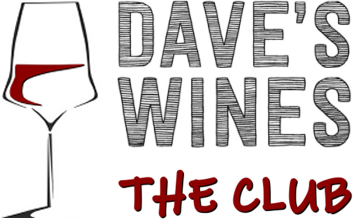




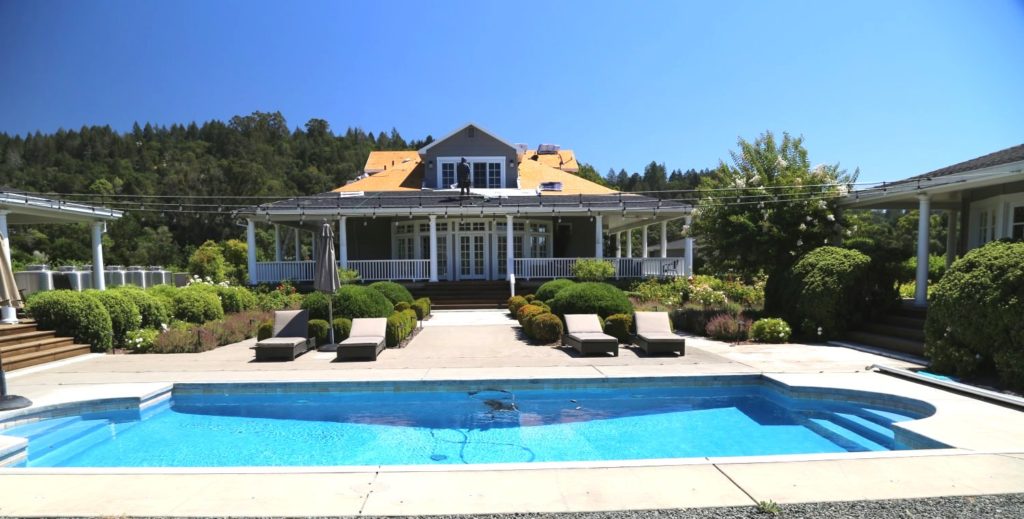



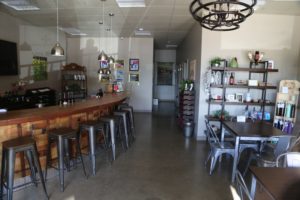

Do you still sponsor an Adopt-a-vine program? I am interested in pursuing as a gift for the forthcoming birthday of my son, John E. Feighan, MD.
Lynne – the adopt a vine was discontinued after the ownership change.